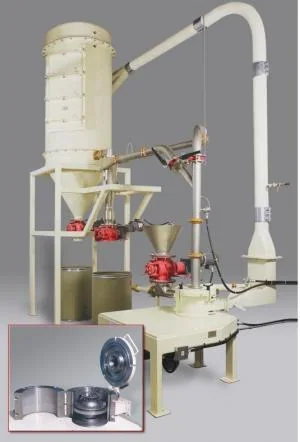Milling: Impact with Classification, High-Speed Impact & Attrition Mills
Leave a CommentThere is no single grinding system that can do it all!
Choosing the appropriate milling system is based on your particle size distribution requirements, feed material sensitivities, moisture content, hardness, flow (free-flowing, semi-free flowing or prone to bridging/plugging), melting point, brittleness, and abrasiveness, among other factors. Here are brief descriptions for several grinding mill system methods:
Air Classifier Mills, such as the CMS Air Swept Classifier Mill, combine impact grinding and particle size classification in a single continuous process (occurring inside the mill) rather than in a separate downstream mechanical process. Independent drives for the classifier wheel and impact rotor allows the operator to adjust each component’s rotational speed independently. Drag and tip speed control the product’s sizing.
High-Speed Impact Mills, such as hammer mills, cage mills and pin mills rely on the rotating speed of the hammers/pins and classifiers or screens to control the particle size of the materials. A variation (in some pin mills) is the counter-rotating two-rotor assembly, spinning in opposite directions. This configuration works on the principle of higher tip speed (impact actions) for fine grinds.
Attrition or Disc Mills, are milling machines arranged with one rotating and one stationary disc. The grinding surface has machined teeth. In changing the final particle sizing, the distance between the discs is adjusted, as well as the shape, depth, and number of the grinding teeth. The grinding process is more of a cutting action (attrition) of the disc mills.
Want to learn more? Give us a call or contact us!

